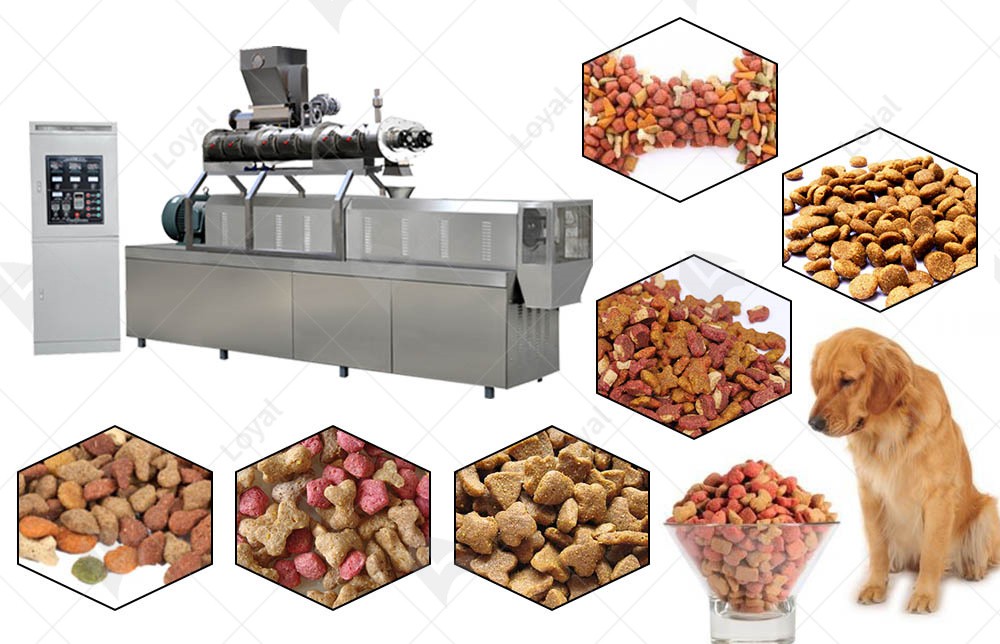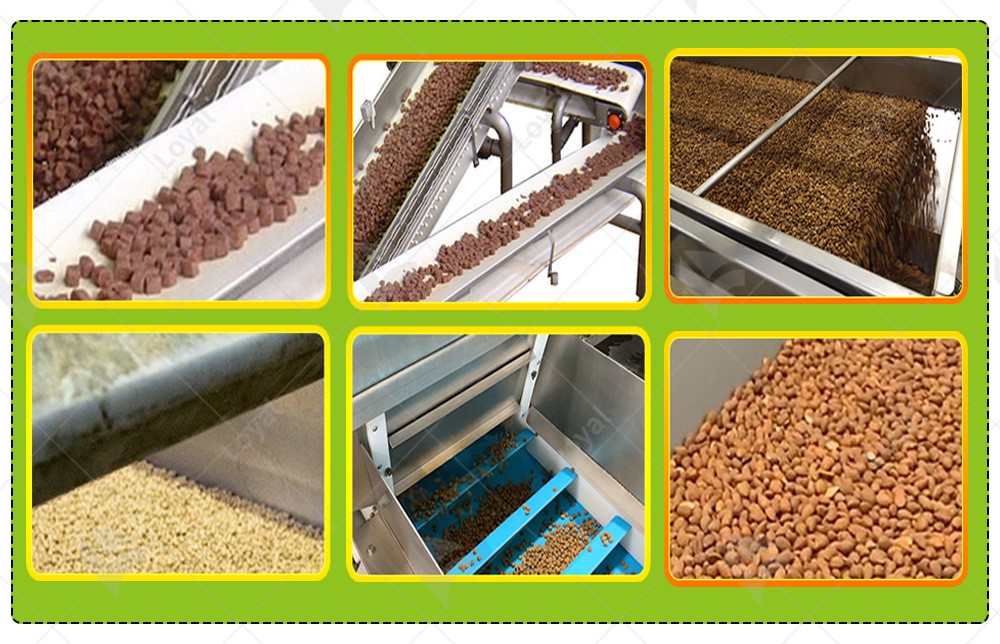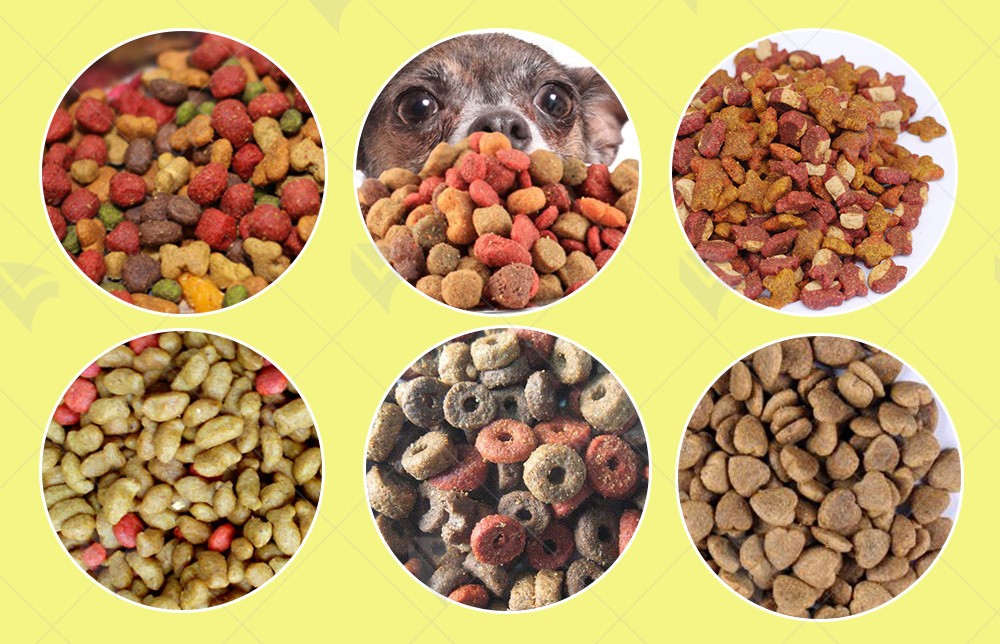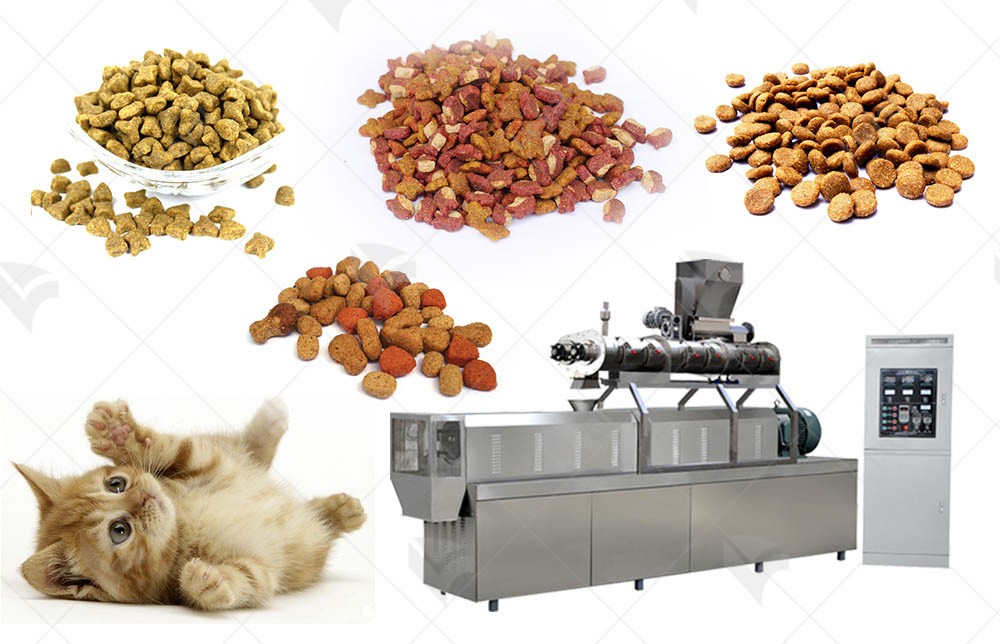How To Choose The Best aqua feed manufacturing process: 2024 Buyer’s Guide
Overview of the Importance of Aqua Feed in Supporting the Aquaculture Industry and Its Growth Potential
In the realm of food production, aquaculture stands as a cornerstone, contributing significantly to global food security and economic growth. At the heart of this thriving industry lies aqua feed – a specialized formulation designed to nourish aquatic organisms, such as fish, crustaceans, and mollusks, throughout their lifecycle. The significance of aqua feed extends far beyond mere nutrition, playing a pivotal role in supporting the aquaculture industry's expansion and evolution.
1.The Foundation of Aquaculture Growth
Aquaculture, the farming of aquatic organisms, has witnessed remarkable growth in recent decades, driven by population increases, changing dietary preferences, and advancements in technology. This growth trajectory is intrinsically linked to the development and optimization of aqua feed. As the demand for seafood escalates, efficient and sustainable aqua feed manufacturing processes have become paramount to meeting production targets while ensuring the health and welfare of farmed species.
2.Nutritional Precision for Optimal Growth
Aqua feed is formulated with meticulous care, taking into account the unique nutritional requirements of different aquatic species at various life stages. By incorporating essential amino acids, fats, vitamins, and minerals, aqua feed supports optimal growth rates, disease resistance, and overall health. This precision nutrition is crucial for maximizing productivity and profitability within the aquaculture industry.
3.Sustainability and Environmental Impact
The adoption of advanced aqua feed manufacturing processes is also instrumental in promoting sustainability within the aquaculture sector. Efficient use of resources, such as reducing waste and optimizing ingredient sourcing, is essential for minimizing the industry's environmental footprint. Furthermore, the development of eco-friendly feed formulations, including those incorporating alternative protein sources and reduced levels of environmental pollutants, is a growing trend aimed at enhancing sustainability.
4.Economic Stimulus and Job Creation
The importance of aqua feed extends beyond its direct role in supporting aquaculture production. The industry itself serves as a significant economic driver, creating jobs across various sectors, from feed manufacturing and distribution to aquaculture farming and processing. As the demand for seafood continues to rise, the aqua feed industry is poised to experience further growth, spurring economic activity and fostering innovation.
5.Innovation and Technological Advancements
Advancements in technology, particularly in the realm of automation and digitalization, are transforming the aqua feed manufacturing process. Automated systems streamline production, enhancing efficiency, and reducing errors. By leveraging precision technologies, manufacturers can tailor feed formulations to meet specific nutritional needs, further optimizing growth outcomes and economic returns.

Understanding the Aqua Feed Manufacturing Process
The aqua feed manufacturing process represents a highly specialized and intricate endeavor, tailored to meet the unique nutritional demands of aquatic organisms.
|
Raw Material Sourcing and Preparation |
The journey of aqua feed begins with the meticulous sourcing and preparation of raw materials. These typically include protein sources such as fishmeal, soybean meal, and animal by-products, as well as carbohydrates, fats, vitamins, and minerals. The quality and composition of these raw materials are crucial factors influencing the final feed's nutritional profile and performance. |
|
Formulation and Mixing |
Once the raw materials are sourced and prepared, the next step involves formulating the feed blend. This process requires a deep understanding of the nutritional requirements of the target species and their life stages. Formulas are carefully designed to ensure optimal growth, health, and performance. The raw materials are then mixed in precise proportions using high-speed mixers or extruders, ensuring homogeneity and consistency throughout the batch. |
|
Extrusion and Pelletizing |
A pivotal stage in the aqua feed manufacturing process is extrusion and pelletizing. This step involves forcing the mixed feed material through a die under high pressure and temperature, shaping it into pellets or other desired forms. Extrusion not only enhances the feed's physical structure, making it more resistant to water and improving its digestibility, but it also facilitates the application of coatings or additives that can further enhance its nutritional value or stability. |
|
Drying and Cooling |
Immediately following extrusion, the feed pellets undergo a drying process to remove excess moisture. This is crucial for preventing mold growth and ensuring long-term storage stability. Drying is typically achieved using hot air or infrared radiation, with careful temperature control to avoid damaging the feed's nutritional content. Once dried, the pellets are cooled to prevent overheating and maintain their structural integrity. |
|
Quality Control and Packaging |
Throughout the manufacturing process, rigorous quality control measures are in place to ensure that the final product meets strict standards for safety, nutrition, and performance. This includes testing for contaminants, verifying nutrient levels, and assessing physical characteristics such as pellet size and durability. Once the feed passes all quality checks, it is packaged in moisture-proof bags or containers, ready for distribution to aquaculture farms. |

Benefits of Automated Efficiency in Aqua Feed Manufacturing
The integration of automation into the aqua feed manufacturing process has revolutionized the industry, ushering in a new era of high-yield production, enhanced quality control, and cost-effectiveness.
1.Increased Production Capacity and Consistency
One of the most significant advantages of automating the aqua feed manufacturing process is the increase in production capacity. Automated systems can operate continuously, with minimal human intervention, allowing for round-the-clock production. This not only enhances the volume of feed produced but also ensures consistency across batches. Automated mixing, extrusion, and packaging processes guarantee that every pellet meets the same high standards, reducing the risk of variation in nutritional content or physical characteristics.
2.Improved Quality Control
Automated systems incorporate advanced sensors and monitoring technologies that enable real-time tracking of key parameters throughout the manufacturing process. This includes temperature, moisture content, and ingredient proportions. By continuously monitoring and adjusting these factors, manufacturers can maintain optimal conditions for feed production, resulting in a more consistent and higher-quality final product. Additionally, automated quality control checks can identify and address potential issues early on, minimizing waste and enhancing product safety.
3.Cost Savings and Resource Efficiency
Automation also leads to significant cost savings and improved resource efficiency. By reducing the need for manual labor, automated systems help to mitigate labor costs, particularly in regions with high labor expenses. Furthermore, automated systems are designed to minimize waste and optimize material usage, leading to reduced raw material costs. The ability to precisely control production parameters also enables manufacturers to minimize energy consumption and reduce their environmental footprint.
4.Enhanced Safety and Hygiene
In the aqua feed manufacturing process, safety and hygiene are paramount. Automated systems help to maintain a clean and hygienic production environment by reducing human exposure to potentially hazardous materials and processes. This not only protects workers but also minimizes the risk of contamination in the final product. Automated cleaning and sanitization systems ensure that equipment remains in peak condition, further enhancing safety and hygiene standards.
5.Increased Flexibility and Scalability
Automated systems offer manufacturers greater flexibility and scalability in their production processes. With the ability to quickly adjust production parameters and switch between formulations, manufacturers can easily adapt to changing market demands or the needs of different species. This flexibility is crucial in an industry where consumer preferences and market conditions are constantly evolving. Additionally, automated systems can be scaled up or down as required, allowing manufacturers to expand or contract their operations in response to market conditions.

Overcoming Barriers to Automation Adoption in Aqua Feed Manufacturing
The adoption of automation in the aqua feed manufacturing process represents a significant step forward in enhancing productivity, quality, and efficiency. However, despite its numerous benefits, several barriers often hinder manufacturers from fully embracing this revolutionary approach. As an industrial food machinery expert, I will discuss the primary barriers to automation adoption in aqua feed manufacturing and strategies for overcoming them.
|
Initial Investment Costs |
One of the primary barriers to automation adoption is the significant upfront investment required. Automated systems can be costly, and many manufacturers may be hesitant to invest in them due to financial constraints. To overcome this barrier, manufacturers should consider the long-term benefits of automation, such as increased productivity, reduced labor costs, and improved quality control. Additionally, exploring financing options, such as loans or grants, can help to spread the cost over time and make the investment more manageable. |
|
Technical Expertise and Training |
Another barrier to automation adoption is the need for technical expertise and training. Automated systems require specialized knowledge to operate and maintain effectively. Manufacturers may face challenges in finding and retaining skilled personnel to manage their automated systems. To address this issue, manufacturers should invest in employee training programs and establish partnerships with educational institutions to develop a pipeline of skilled workers. Furthermore, collaborating with automation providers that offer comprehensive support and training services can help to ensure a smooth transition to automation. |
|
Integration with Existing Processes |
Integrating automation into existing manufacturing processes can be a complex task. Manufacturers may struggle to integrate new automated systems with their existing equipment and workflows, leading to delays and inefficiencies. To overcome this barrier, manufacturers should carefully plan their automation projects and involve all relevant stakeholders from the outset. This includes conducting a thorough assessment of existing processes and identifying areas where automation can add the most value. Working closely with automation providers to design customized solutions that seamlessly integrate with existing systems can also help to minimize disruption and optimize outcomes. |
|
Fear of Disruption and Resistance to Change |
Fear of disruption and resistance to change can also be barriers to automation adoption. Some manufacturers may be hesitant to embrace automation due to concerns about job losses or the potential impact on their existing operations. To address these concerns, manufacturers should communicate the benefits of automation to their employees and involve them in the decision-making process. Highlighting how automation can enhance job security by reducing repetitive and dangerous tasks, as well as creating new opportunities for skilled workers, can help to build support for automation initiatives. |

Future Outlook for Automated Efficiency in High-Yield Aqua Feed Manufacturing Process
As the aqua feed industry continues to evolve, the adoption of automation in the manufacturing process is poised to revolutionize the sector, driving unprecedented levels of efficiency, quality, and sustainability.
1.Increased Precision and Customization
One of the key areas of growth for automated aqua feed manufacturing is increased precision and customization. Advanced automation systems will enable manufacturers to produce feeds tailored to the specific nutritional requirements of different aquatic species, ensuring optimal growth and health. This level of precision will be crucial in meeting the demands of the growing aquaculture industry, where consumers are increasingly seeking sustainably sourced, high-quality seafood products.
2.Integration with IoT and Big Data
The integration of the Internet of Things (IoT) and big data analytics into automated aqua feed manufacturing processes will also play a significant role in the future. By connecting automated systems with sensors, manufacturers can collect real-time data on production parameters, such as temperature, humidity, and ingredient mixing ratios. This data can then be analyzed to identify areas for improvement, optimize production cycles, and reduce waste. Additionally, predictive analytics can help manufacturers anticipate and prevent potential issues before they arise, ensuring continuous and efficient operation.
3.Sustainability and Environmental Impact
Sustainability and minimizing environmental impact will be key considerations in the future of automated aqua feed manufacturing. Automated systems can help reduce energy consumption, water usage, and waste generation by optimizing production processes and minimizing human error. Furthermore, the use of alternative ingredients, such as by-products from other industries, can help to reduce the reliance on finite resources and lower the carbon footprint of aqua feed production.
4.Continued Innovation and Collaboration
The future of automated aqua feed manufacturing will also be shaped by continued innovation and collaboration among manufacturers, suppliers, and research institutions. As technology advances, new automation solutions will emerge, offering even greater levels of efficiency and precision. Collaboration between stakeholders will be essential for staying at the forefront of these developments and ensuring that automation initiatives align with industry needs and regulatory requirements.

Reference
The following are five authoritative foreign literature websites in the field of Industrial food machinery:
1. Food Engineering Magazine
Website: https://www.foodengineeringmag.com/
2.Food Processing Magazine
Website: https://www.foodprocessing.com/
3.Journal of Food Engineering
Website:https://www.journals.elsevier.com/journal-of-food-engineering
4. Food Manufacturing Magazine
Website:https://www.foodmanufacturing.com/
5. International Journal of Food Science & Technology
Website:https://onlinelibrary.wiley.com/